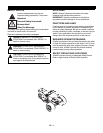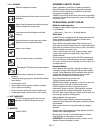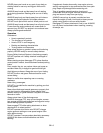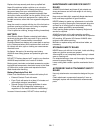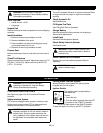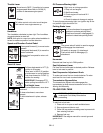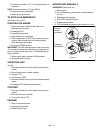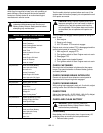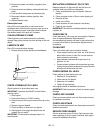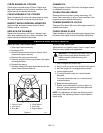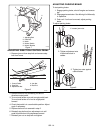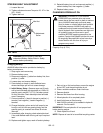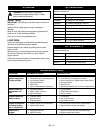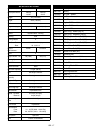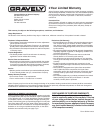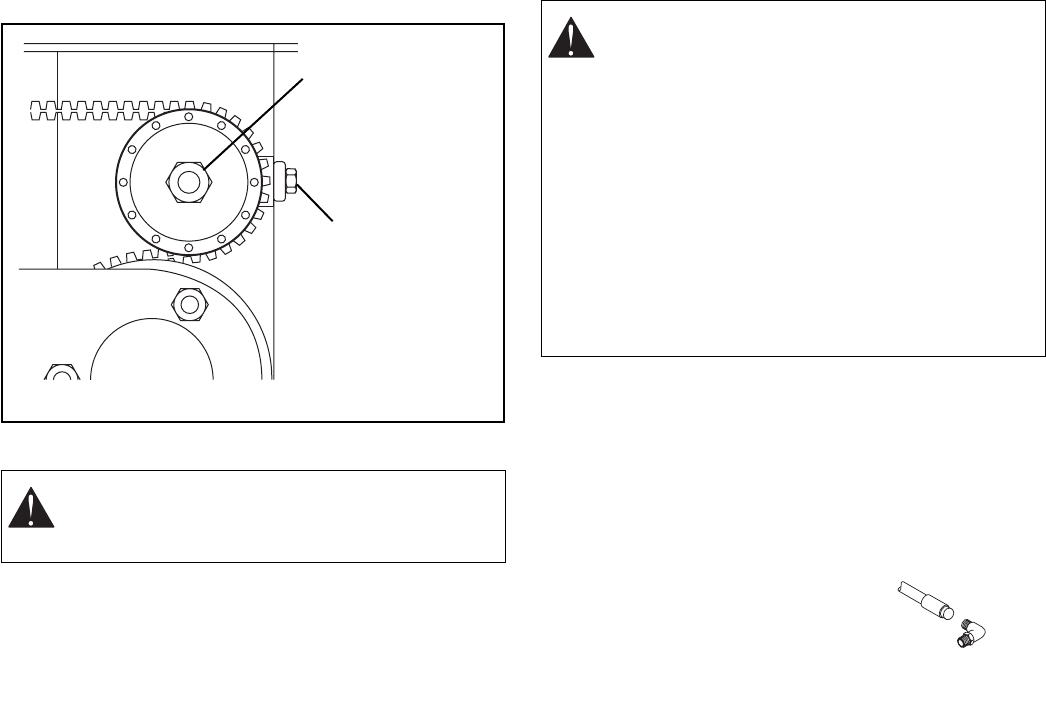
GB - 15
STEERING BELT ADJUSTMENT
1. Loosen idler nut.
2. Tighten adjustment screw. Torque to 23 - 27 in. lbs.
(2.6 - 3 Nm).
3. Tighten idler nut.
BATTERY
Charging Battery
ALWAYS follow information provided on battery by
battery manufacturer.
1. Stop engine and remove key.
2. Remove battery cover.
3. Disconnect negative (-) cable from battery first, then
positive (+) cable.
4. Loosen strap and remove battery.
5. Place battery on bench in well ventilated area
where electrolyte spill will not cause damage.
6. Initial Battery Setup - Remove caps and fill each
cell to level indicated with electrolyte at 1.265±.05
specific gravity and 80˚F (27˚C). Let battery stand
for thirty minutes. Check electrolyte level and add
more if necessary.
7. Connect positive (+) lead of charger to positive (+)
terminal, and negative (-) lead to negative (-)
terminal.
8. Charge the battery at two and a half amps for ten
hours or until all cells are gassing freely and the
specific gravity is constant over three 30 minute
intervals.
9. Immediately after charging, check electrolyte level.
If low, add distilled water to bring cell up to required
level.
10. Replace and tighten caps, wash off and dry battery.
11. Reinstall battery into unit and connect positive (+)
cable to battery first, then negative (-) cable.
12. Replace battery cover.
CHANGING HYDRAULIC OIL
Capacity: 5 qt. (4.73 L)
1. Park unit on a flat level surface, ensure the engine
is shut OFF, and the parking brake is set.
2. Place a suitable container under inlet hose.
3. Remove dipstick.
4. Remove inlet hose from filter housing.
5. Allow hydraulic oil to completely drain.
6. Install inlet hose on filter housing.
7. Add 15W-50 synthetic oil as needed to hydraulic
reservoir. Do not overfill.
IMPORTANT: Ensure hydraulic oil is at proper level
before starting engine.
8. Check hydraulic oil level.
NOTE: Dispose of used oil at a certified recycling center.
WARNING: AVOID INJURY. Read and
understand Battery Safety Rules in Safety
section before proceeding.
Idler Nut
Adjustment
Screw
Figure 10
OF3401
WARNING: HYDRAULIC FLUID UNDER
PRESSURE can penetrate skin and cause
severe burns that can result in death or serious
injury. ALWAYS keep body and hands away
from pin holes or nozzles which eject hydraulic
fluid under pressure. ALWAYS use paper or
cardboard and not hands to search leaks. Know
that all hydraulic fluid connections are tight and
all hydraulic hoses and lines are in good
condition BEFORE applying pressure to the
system. Foreign fluid injected into the skin must
be surgically removed within a few hours by a
doctor familiar with this form of injury or
gangrene may result.



